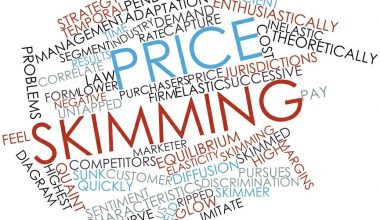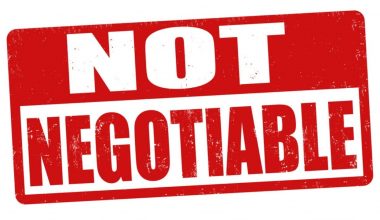Returning customers is a great way for businesses to keep meeting their revenue goals. In fact, they are a chunk of any business’s customer base. When it comes to getting new customers, businesses spend a lot on marketing and advertising. However, they don’t have to convince returning customers to try the brand’s products or services. More than ever, companies are messaging their customers. Sending customers direct communications increases their likelihood of coming back, which is a great strategy to maintain their interest in your business. This is especially important after their first purchase. When you write beautiful thank-you cards to both new and returning customers, building customer loyalty is straightforward and you need this to record recurring revenue.
Returning Customers
Recurring customers are a crucial component of continued prosperity, so they are greatly relied upon by any successful business. However, when there is intense rivalry, businesses may struggle to draw in new customers and keep old ones coming back.
Returning customers, simply put, are people who have previously used your product or service and have returned to do so again. Every business wants its first-time customers to become devoted customers. This is because returning customers who become repeat customers will make up the largest and most dependable section of your customer base.
What Are the Importance of Returning Customers?
Since returning customers make up the largest section of your customer base, it means they are important to every business. The following are some of the importance, or rather benefits, of returning customers.
#1. They serve as free advertisements for your business
These customers frequently have the capacity to recommend a favorite firm to others. This word-of-mouth marketing technique for your organization is frequently quite effective (which you as the business owner may support with repeat clients).
#2. Finding new customers is more expensive than trying to keep the ones you already have
It is more expensive and time-consuming to get new customers than to have an existing one return to your business. Retaining a previous customer often needs little to no additional promotion instead than beginning again with new customers who have never heard of your company.
#3. They can be used to assess new products and services
Recurring customers are frequently open to new product releases or design changes that enhance the effectiveness and customer-friendliness of an already-existing product or service. Since they are already familiar with your company’s offerings, they frequently express excitement when asked to “try our newest product.”
Returning Customer Rate
The repeat customer rate is the proportion of clients (consumers) that a company keeps over time. It also displays the amount or percentage of a company’s clients who do business with it repeatedly. Despite the metric’s apparent simplicity, it offers significant insights into potential development and improvement areas.
To prevent your estimates from shifting, you must also take any new clients into consideration. Your customer retention rate is not 110%, for instance, if you start off with 20 consumers, lose eight, then gain nine. Therefore, tracking retention or loyalty indicators is essential for assessing the efficacy of a company’s customer service initiative and marketing plan.
Returning Customers Rate: How to Calculate it?
The return customer rate is calculated as the proportion of repeat customer transactions to all website purchases made within a specified time period. The following equation is used to calculate the percentage of repeat or returning customers:
Repeat rate: number of customers who have shopped more than once // number of customers
For example 100 of Toyota Limited’s 300 customers have made numerous purchases during the last two years. How many customers come back?
In light of the prior enquire; 300 people in all while 100 total recurring clients
The percentage of repeat customers multiplied by 100% is the total number of repeat customers divided by all customers.
Therefore, the percentage of recurring customers is (100/300) X 100% = 25%.
What Percentage Of Return Purchases Is Ideal?
Depending on the product mix and consumer groups you’re targeting, each sector has a certain set of “acceptable” rates that change for different stores. A repeat purchase proportion of 19.87% to 39.6% is a reasonable range for small and medium-sized merchants. Aiming for a repeat purchase proportion of at least 27%, advises Squarespace, is a solid benchmark.
How To Encourage Customers To Return
More recurring business is crucial. normal follow-ups after a purchase, personalized emails delivered via email marketing, etc. A business needs to employ tactics that continue to resonate with customers after a deal has been made.
Let’s look at some popular tactics for persuading customers to make more purchases from your business:
#1 Keep in Touch
Emails, e-newsletters, and personalized phone calls can all be used to keep your clientele informed about your existence. Regardless of the approach you take, it’s important to emphasize to them the excellent service you are offering them.
They might not notice if you never mention anything you do for your clients. You must constantly remind them of how much your efforts have made their lives easier, whether through updates from the delivery agent or the processing of the paperwork.
Using social media is a terrific way to attract regular customers to your business. Include your Facebook and Twitter handles on flyers, business cards, and several other forms of advertising and marketing. If you communicate with clients via email, be sure to add links to your social media accounts in your email signature. Consider adding plug-ins to your website. This will make your user interface friendly and also make it possible for visitors to follow you on social media.
#3. Create an Application
It might get pricey if you want a stylish or multi-purpose app. On the other hand, a straightforward one might depend on the developer’s expertise and experience and fit within a given budget.
An application can be a potent tool to boost sales given that the quick-changing world of today wants everything on their cell phone. A straightforward system that ensures the effective supply of your product or service might expedite your growth.
If this plan is implemented incorrectly, customers can lose interest and your business might suffer. The development of such a website or application requires the creation of a thorough checklist.
#4. Increase Personality in Communications
An excellent approach to letting your customers know about new specials and promotions is through emails. However, such emails would eventually collect dust in the spam or trash bin. It’s crucial to diversify your communication techniques as a result.
Connect with them and engage with them on social media in the same way that you would in emails. To increase the number of people who contact you and engage in conversation, use the same communication channels. Customers would feel more at ease doing business with you as a result.
#5. Take Control of Your Email List
Despite the general decrease in traditional mailing lists, businesses continue to use email mailing lists extensively. By ticking a box when enrolling for your service online or by being prompted in person, customers can choose to join your mailing list.
Give customers the option to opt-out; for instance, some companies that employ SMS marketing allow clients to text “stop” to be immediately taken off the mailing list.
#6. Respond to All Criticism in Whatever Way
When you address client concerns, your brand becomes more personable. Additionally, in this day where everything is swiftly becoming automated, it is imperative to remind your clients that not everything is a machine.
In comments on social media platforms, customers routinely discuss their encounters with unresponsive customer care or other problems. The brand recognizes it and responds when it begins to gain traction.
Make dealing with customers a focal point of your customer service. So, even if one or two customers have an issue, they would still have faith and understand the situation. resulting in no modification in the business’s broad metrics.
#7. Watch Out For Your Rivals
Understanding your market is important, thus it’s important to maintain track of the deals and discounts that your competitors are offering to entice customers to buy from them. Lowered prices or freebies, however, are not a successful business approach.
Rather, concentrate on defining and highlighting your unique selling proposition (USP). In this approach, even if your rivals provide their goods for 50% less, your clientele will still choose you because they trust the quality of your customer care and support.
#8. Maintain Exceptional Customer Service
Quality is preferable to quantity. A significant number of sales won’t help you in the long term if you don’t solve the issues of a few customers who contacted you after the sale or during the purchase. Through customer service and care, you can only hear criticism and improve your offers.
Additionally, treat every consumer category fairly. The biggest mistake is expecting loyal consumers to stay because they formerly enjoyed your service. This assumption may cost you business regardless of how many times a customer has invested in your firm. Till the day your business is up and running.
#9. Run Loyalty Initiatives
One of the traditional strategies for promoting recurring business is a loyalty program. All you need to do is collect customer data, issue them a new card or account number, and pay them for subsequent purchases. Loyalty programs not only promote repeat business but also raise average transaction value.
What To Say To Returning Customers
Well, businesses come up with diverse means of luring new customers, but most of them do not pay attention to existing ones. It’s paramount to ensure that each customer’s visit to your store is memorable. If a particular client visits 10 times a week, appreciate them ten times in total. Giving clients a memorable experience ensures that their loyalty remains with you. Wondering what to say to your returning customers? You can do this via phone calls, letters, text messaging, and so on. You can check out the suggestions below;
- We value your patronage of [company name]. Please let us know if there is anything else we can do for you.
- On behalf of [company name], we wanted to thank you for your purchase. We are so grateful to have customers like you!
- You are a great help. We genuinely appreciate your decision to work with us, and we look forward to doing so again soon.
- We value your business as a devoted customer. We really appreciate your business and hope we have met your expectations. [Insert a hyperlink to a customer feedback survey.]
- We value your patronage and thank you for it. We’ve sent a voucher for your upcoming order: [Insert URL or Promotional Code]
- [Company name] values your patronage. If there is ever a chance, we would like to work with you.
- I appreciate it. We genuinely hope you enjoyed yourself, and we hope to see you again soon. [Insert a hyperlink to a customer feedback survey]
Additional Suggestions
- We sincerely hope you love what you bought! We appreciate you choosing [company name] as a vendor.
- We value your decision to cooperate with us. We are excited to work with you again.
- Thank you for making your first purchase from [company name]! We are thrilled that you found what you were looking for. Please let us know your thoughts. [Insert a hyperlink to a customer feedback survey.]
- Thank you for your order dated [date]. We are excited to collaborate with you again!
- I value your important business. We sincerely appreciate your trust in us and thank you for it.
- We greatly appreciate your continued patronage. We can’t wait to help you again in the future!
- [Company name] I would like to thank customers like you for being dependable customers. We couldn’t succeed without you!
- We value your business, trust, and confidence. For us, working with you is a pleasure.
- We appreciate you purchasing recently. The [company] values your patronage and looks forward to doing business with you in the future.
What to Take into Account When Writing a Business Thank-You Note
- Especially be positive. Remember that you want your clients to have a favorable opinion of your business.
- Make it seem more knowledgeable. A business letter should be formatted officially.
- You can help them feel important to your business by letting them know how much their patronage matters to you.
- Consider the future. We hope to be of service to you in the future, or “We look forward to continuing to serve you as a valued customer,” are some such phrases.
- Write succinctly and plainly.
What is a returning customer in business?
Simply put, a repeat client is someone who has previously purchased your product or service and has come back to do so again.
Why are returning customers important?
Customer loyalty is crucial. Starting with the clients you already have will help you increase the profitability of your store.
What is another term for repeat customers?
Reorder rates, repeat customer rates, and customer retention rates are other terms for the repeat purchase rate.
How do you encourage repeat customers?
- Sell what your clients want.
- Provide top-notch client service.
- Consider the feedback and act accordingly.
- wherever possible, be specific.
- Respect each and every recurring client.
Why is new customers more important?
Getting more clients might help you compete with similar companies by increasing your market share and influence.
1. Recurring Revenue
2. Annual Recurring Revenue SAAS
3. Annual Recurring Revenue
4. What is Monthly Recurring Revenue
5. How to Calculate Annual Recurring Revenue
6. Annual Recurring Revenue vs Revenue
7. Recurring Revenue Examples
8. Recurring Revenue Formula
9. Companies with High Recurring Revenue
Conclusion
There’s no doubt that businesses need new customers, however, attention should also be given to strategies that’ll make these prospects returning customers.
Returning Customers FAQs
What is a returning customer in business?
Simply put, a repeat client is someone who has previously purchased your good or service and has come back to do so again.
As opposed to one-time sales, why is it crucial to have repeat customers?
Recurring customer statistics are important because they help businesses estimate their revenue.
- RECURRING REVENUE: How to Calculate Monthly & Annual Recurring Revenue
- 5 Reasons Why ERP Software Is Important for Growth
- ACCOUNTS PAYABLE PROCESS: How to Manage the Process Effectively
- Good Customer Service: Best improvement strategies (+free samples)
- MRR: What Is MRR (Monthly Recurring Revenue)?(Opens in a new browser tab)






